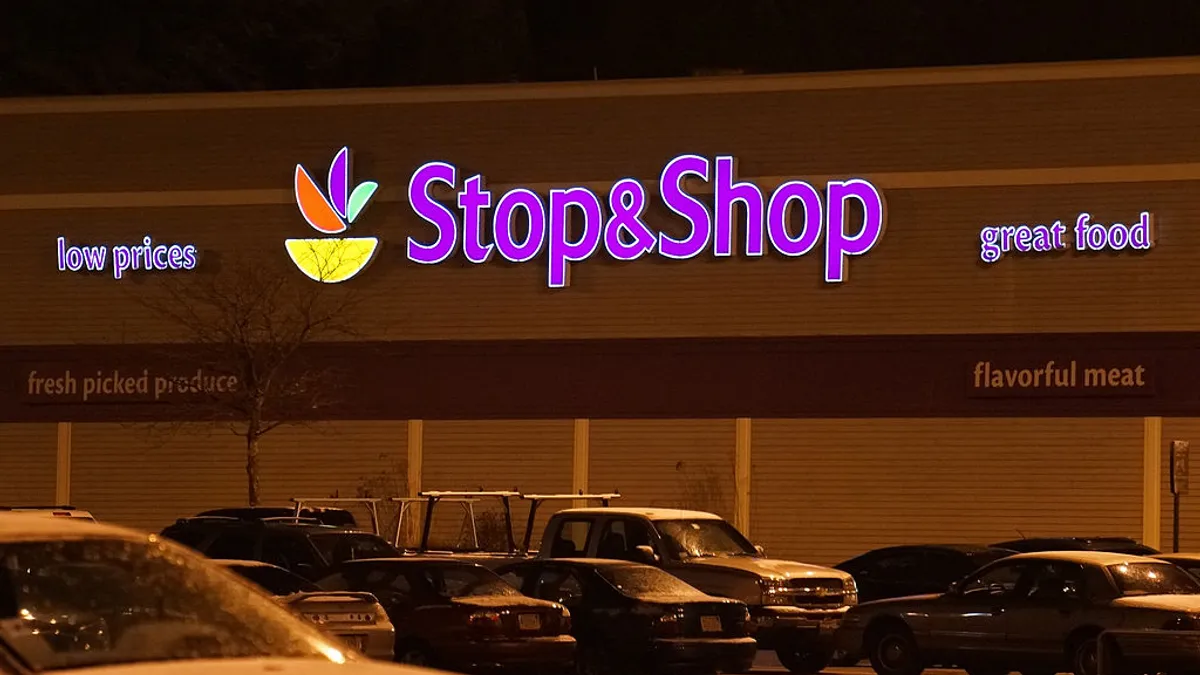Dive Brief:
- Ahold Delhaize reported €355 million ($416.04 million) in net profit for the first quarter of this year — a 68% surge driven by savings produced by last year’s merger of the two principal companies, according to a company release.
- The retailer’s net sales increased by 67.3% to €16.1 billion ($18.87 billion), while net synergies for the first half of 2017 totaled €117 million ($137.12 million). The company increased its total expected merger synergies to €750 million ($878.95 million).
- “In the United States, our sales performance improved with returning inflation, while margins expanded on the back of strong synergy savings,” Ahold Delhaize CEO Dick Boer said in the release. “Our U.S. brands are well-placed in a fast-changing competitive landscape.”
Dive Insight:
In a highly competitive U.S. grocery market, Ahold Delhaize is betting on its size and decentralized model resulting from last year’s merger to deliver savings and innovation across its retail portfolio. These second quarter results show that bet is producing better-than-expected results so far.
Driving Ahold Delhaize’s profit surge were its net synergies for the first half of 2017. These savings come through initiatives like shared supply chains and combined purchasing power. Ahold Delhaize also noted savings coming through its retail business services, which offer support for brand, IT, digital and other categories across the company’s retail banners.
Over the next three years, Ahold Delhaize expects to see €750 million ($880 million) in synergies as the combined companies continue to cut costs and seek efficiencies. That's a sharp increase from the €500 million ($585.96 million) the company originally expected to save over the period.
Easing deflation also boosted Ahold Delhaize’s results. Key categories like meat and produce, the company noted, saw prices rebound after several quarters. Ahold USA’s stores, which include Stop & Shop, Giant Landover and Giant Carlisle as well as online retailer Peapod, saw inflation increase 0.8%. Delhaize USA, meanwhile, saw inflation of 0.1%.
Notable banner performers included Stop & Shop New England, which had a “strong quarter” thanks to solid holiday sales and price competitiveness with regional players like Market Basket, according to Boer. Executives also noted that Food Lion, which many analysts have pegged as a weak performer in the crowded East Coast market, is holding its ground thanks to store remodels, price promotions and other efforts.
“Clearly we know how to react and we also know how to react to newcomers in the market,” CFO Jeff Carr said during a conference call with analysts. “We strongly believe that our kind of positioning of the success is helping us to drive the Food Lion business going forward.”
As grocery shopping continues to move online, Ahold Delhaize plans to continue investing in its e-commerce platforms and sharing ideas across its chain. During the conference call, Carr noted that Hannaford’s click-and-collect program produced strong sales and could be used as a model for brands like Stop & Shop and Giant, whose online sales are comparably weaker.
Executives also addressed Amazon’s impending acquisition of Whole Foods, noting that it venerated the omnichannel approach to retailing that Ahold Delhaize is pursuing across its retail footprint.
“I think it’s clear it’s of course a major development for a market when an online retailer stepping into the physical world,” said Carr. “It also tells us that with our activities over the last 20 years in building the omnichannel offering in the U.S. is clearly the way forward.”









